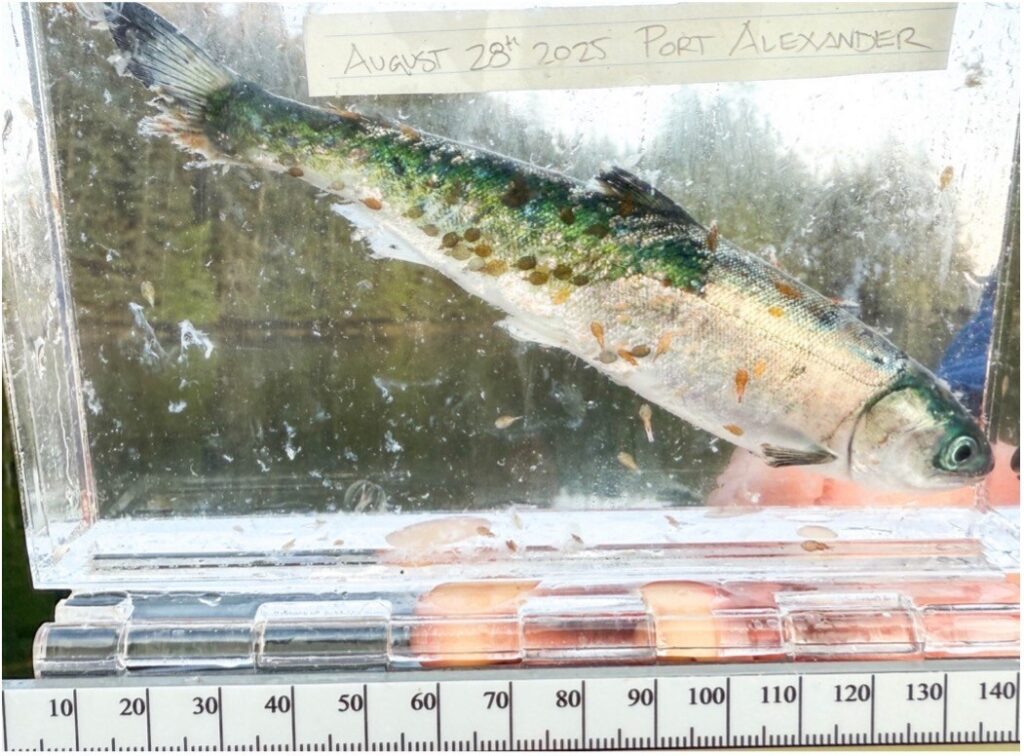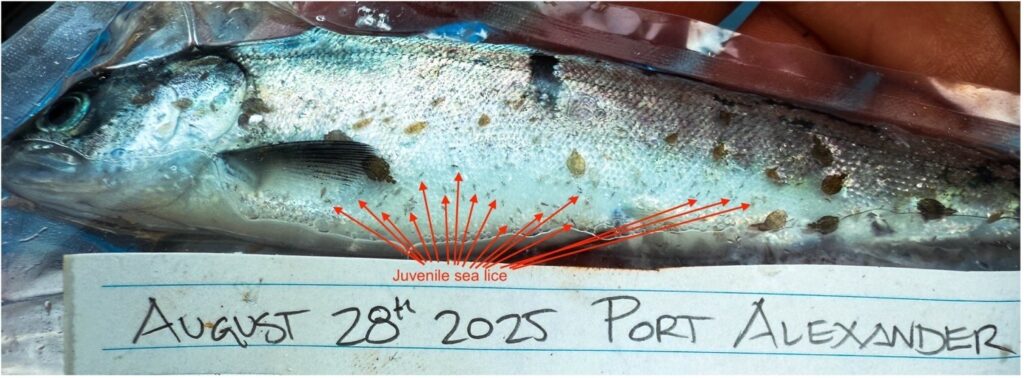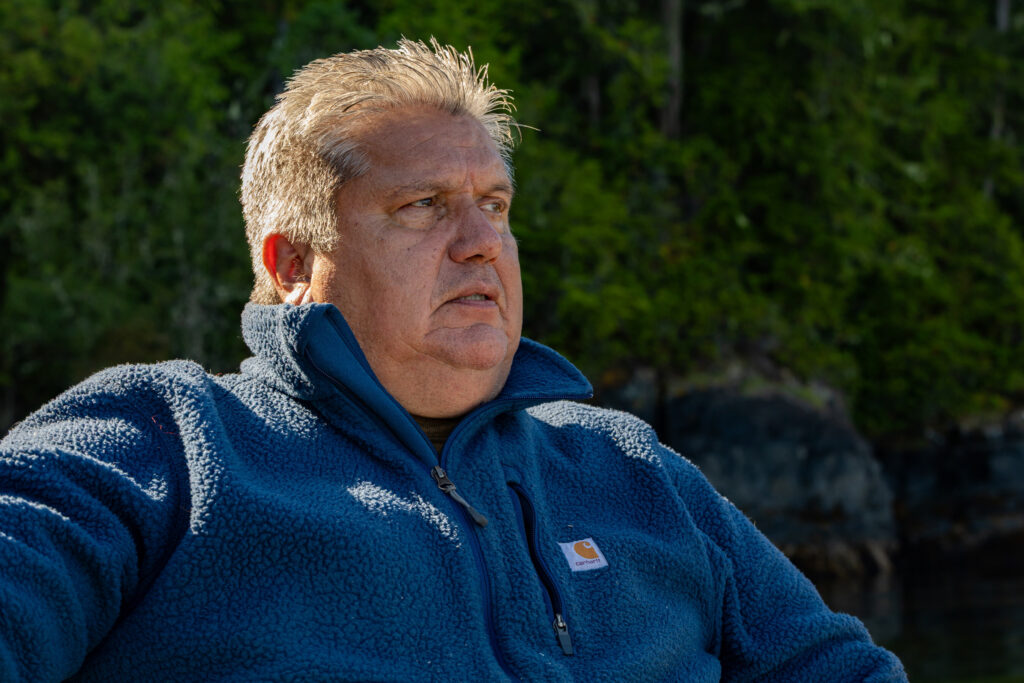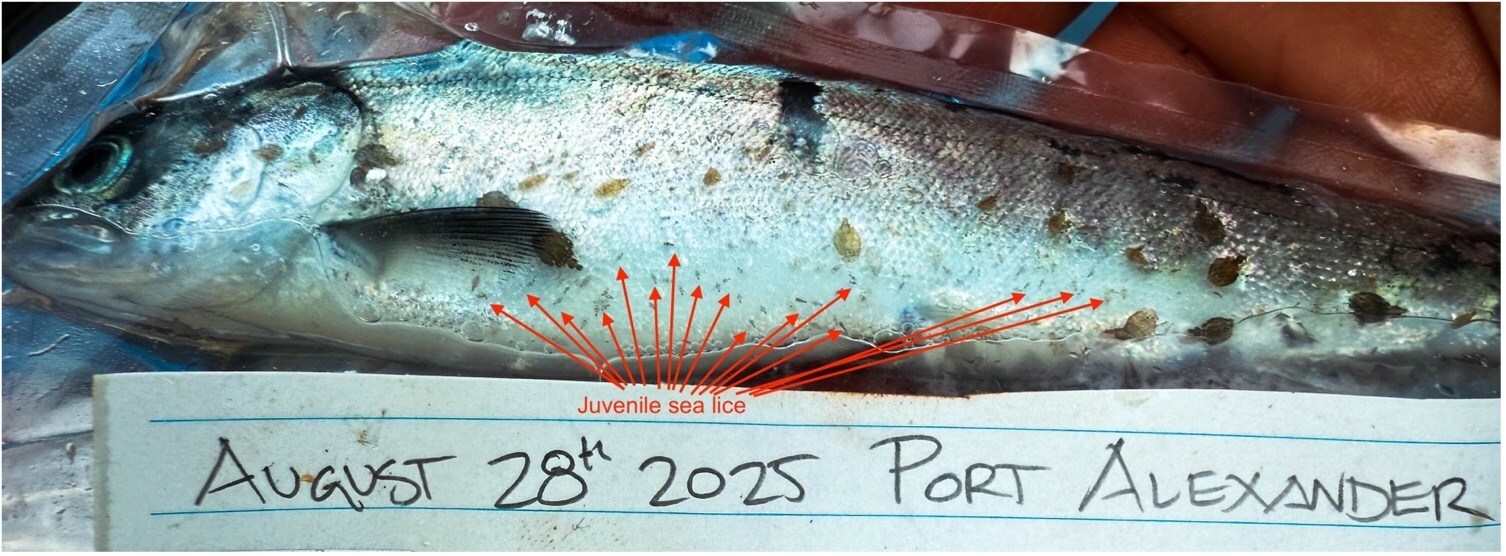

FOR IMMEDIATE RELEASE
September 9, 2025
‘Na̱mg̱is Territory, Alert Bay, BC
Three of the First Nations who have removed fish farms from their territories express concern about a new report of hundreds of sea lice per young chum salmon migrating through waters where fish farms still operate.
Hundreds of lice found on young salmon
Mamaliliḵa̱la, ‘Na̱mg̱is, and Ḵwiḵwa̱sut’inux̱w Ha̱xwa’mis First Nations are outraged at new evidence of extremely high sea lice infections occurring on young chum salmon as they leave their territories.
On August 28, 2025, a research team reported hundreds of sea lice per fish on young chum salmon caught off Port Hardy.

Statement from Hereditary Chief Homiskanis
“The photographs I received on August 28 confirm young salmon migrating through salmon farm waste off Port Hardy are suffering enormous impacts. These young chum salmon are infected with early-stage lice, which tells us the lice became attached in the area where ten MOWI salmon farms are operating,” says Hereditary ‘Na̱mg̱is Chief Homiskanis (Don Svanvik).

“I am not one to tell another Nation how to manage their territory, but I am also not going to sit idle while young salmon suffer this fate as soon as they leave the protection we provide in ‘Na̱mg̱is Territory. We have done everything we can to bring back Nimpkish River salmon. This is unacceptable.”

Context
- Mamaliliḵa̱la, ‘Na̱mg̱is, and Ḵwiḵwa̱sut’inux̱w Ha̱xwa’mis First Nations did not consent to fish farms in their territories.
- Before each farm was removed, members conducted monthly sea lice counts and disease sampling, enforced strict lice limits, and witnessed the impacts first-hand.
- Since the removal of salmon farms, wild salmon returns to the Broughton have skyrocketed:
- Chum salmon returns to the Viner River jumped 22 times higher than recent years.
- Pink salmon increased in the Ahnuhati River from an average of 12,000 fish to 106,000 in 2024.
- However, the Nimpkish River—closer to the ten salmon farms still operating off Port Hardy—is not recovering as strongly.
MOWI’s July reporting confirmed that five of their six active farms off Port Hardy were over DFO’s lice limit for protecting young wild salmon.
Protecting Wild Salmon
“We are well aware of the so-called debate over the impacts of salmon farms, but remember that we were on the farms, did the research, and are collaborating with many scientists. We know what is going on in these farms, and this is what happens to wild salmon when farm lice numbers go up. This has to stop,” says Chief Homiskanis.
On August 6, 2025, ‘Na̱mg̱is thanked the federal government for closing the salmon farms south of the Broughton off Campbell River, after Fraser River sockeye returned in numbers six times higher than forecast.
However, Chief Homiskanis emphasized that Nimpkish River salmon remain vulnerable because they migrate past the Port Hardy farms, where they are exposed to lice and pathogens too early in their lifecycle.
Ongoing Work
‘Na̱mg̱is First Nation remains vigilant in the protection of salmon health:
- Several scientific research papers are underway.
- Two court cases regarding wild salmon survival are in progress.
- The Ḵwiḵwa̱sut’inux̱w Ha̱xwa’mis are also going to court to defend wild salmon.
Meanwhile, the salmon farming industry continues to push to overturn farm closures and the federal government’s 2029 ban on open-net pen salmon farms in BC.
“We will not cease our efforts to protect wild salmon. They are essential to us. Open net pen fish farms are killing wild salmon and must be removed,” says Chief Homiskanis.
Media Contacts
- Chief Homisḵanis (Don Svanvik)
250-974-7506 | donaldsvanvik@gmail.com - Media Support: Emilee Gilpin
514-701-9093 | emileegilpinmedia@gmail.com


